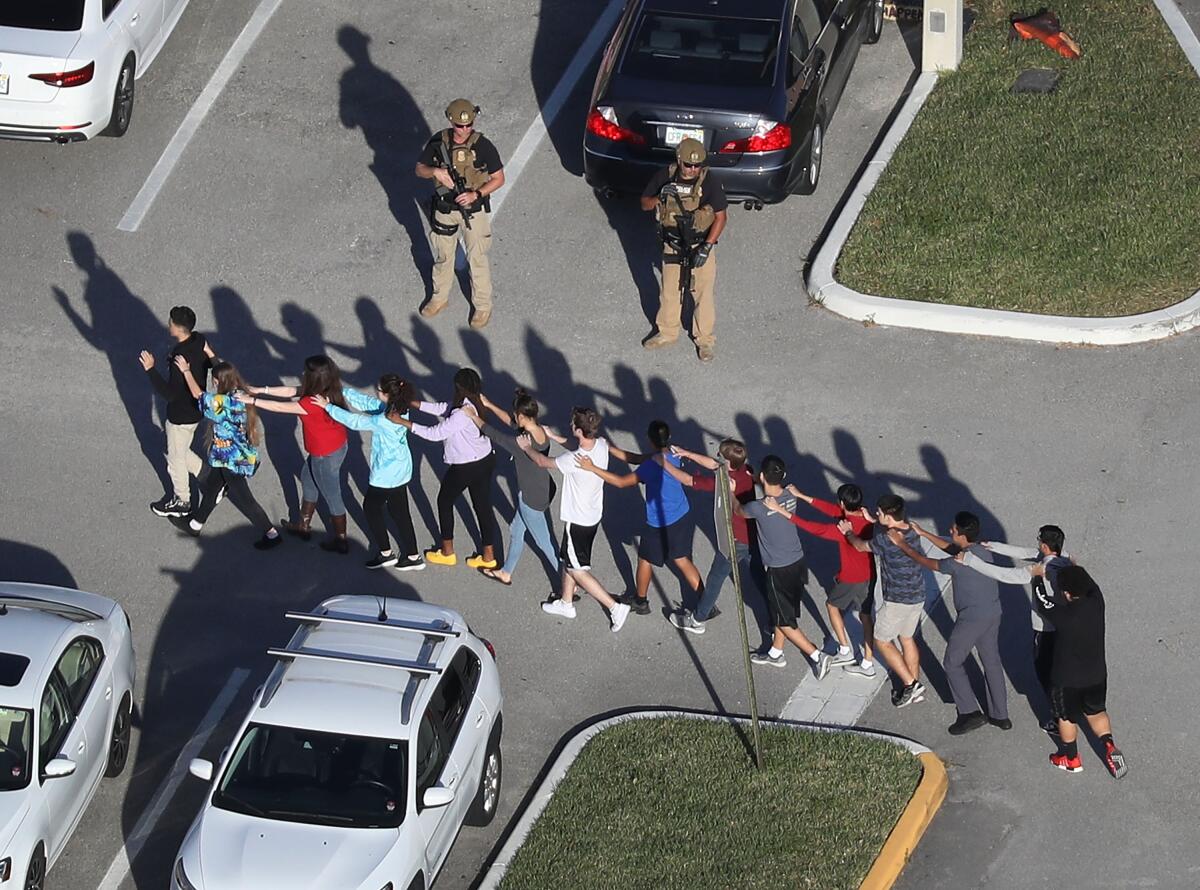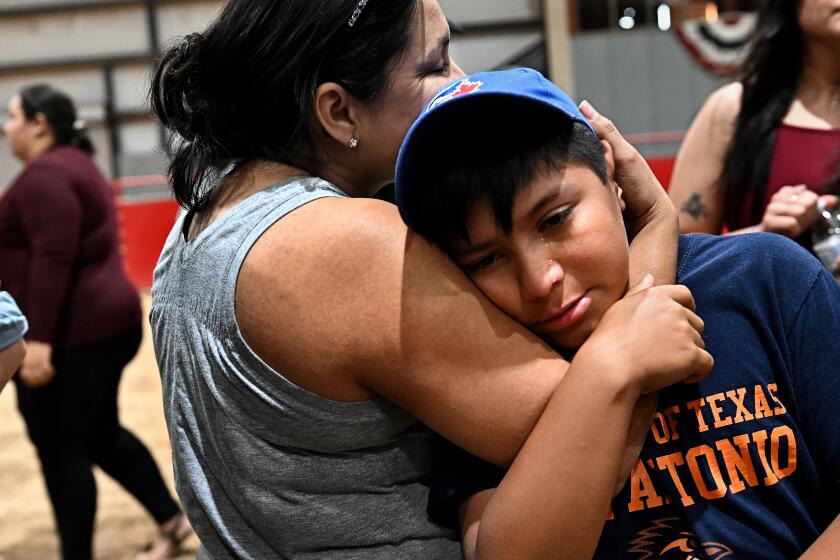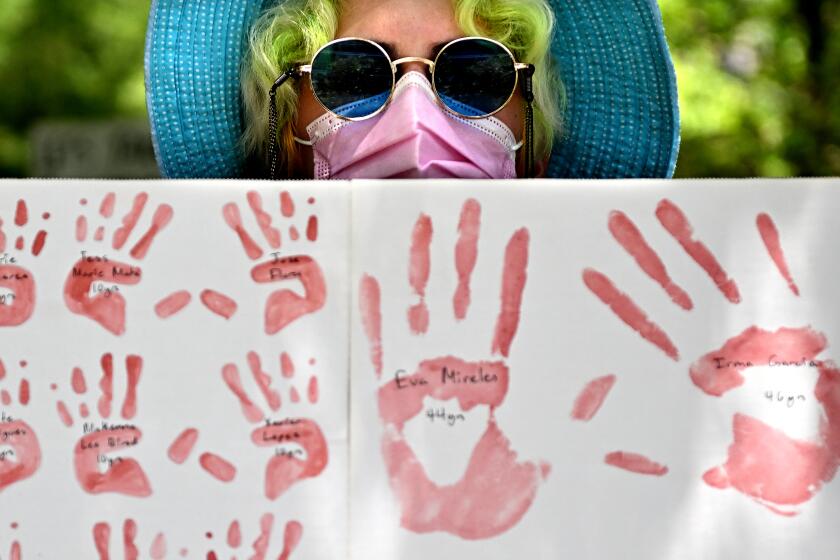School shootings have increased recently; the violence in Texas is among the deadliest

- Share via
School shootings have been on the rise recently, but the scale of carnage Tuesday at an elementary school in Uvalde, Texas, is by far the worst since the 2018 attack at Stoneman Douglas High School in Parkland, Fla.
There have been 26 school shootings reported in the U.S. so far this year and 118 incidents since 2018, according to Education Week, which has tracked school shootings over the last four years. The highest number of shootings in this span, 34, occurred last year.
There were 10 shootings in 2020, and 24 each in 2019 and 2018.
Until Tuesday, six people had died in school shootings since 2018, including five students or children, and 40 were injured. The shooting at Robb Elementary in Uvalde has rewritten the data.
In the Edweek statistics, a school shooting was defined as when a firearm was discharged and when any individual, other than the suspect or perpetrator, had a bullet wound resulting from the incident, which had to occur on a K-12 school property or on a school bus while school is in session or during a school-sponsored event.
The most deadly shooting at a U.S. school occurred April 16, 2007, at Virginia Tech, when a 23-year-old student killed 32 students and faculty members in two attacks, then died by suicide.
The gunman who killed 19 children and two teachers at a Texas elementary school barricaded himself inside a fourth-grade classroom, officials say.
Next is the 2012 Sandy Hook Elementary School shooting in Connecticut, in which a 20-year-old killed 20 first-grade children and six adults, including four teachers, the principal and the school psychologist.
In 2018, a 19-year-old former student killed 17 and injured 17 at Stoneman Douglas High School in Florida, which led to a wave of student activism.
One of the most chronicled incidents was the shooting at Columbine High School in Colorado. Two students killed 12 students and one teacher; most victims were in the school library. The shooters died by suicide.
But while the victims must be remembered and honored, focusing on such lists — especially if the shooter is named — run the risk of inadvertently glorifying such shootings and potentially inspiring copycats to compete for the fame that they assume will accompany high body counts, said Ron Avi Astor, a social welfare professor and expert in school violence at UCLA’s Luskin School of Public Affairs.
Focusing on death counts also potentially overlooks lives changed forever through injuries and psychological harm, he added.
The gunman posted his intentions on Facebook before shooting his grandmother, going to the elementary school and barricading himself in a classroom.
Although there hasn’t been a death toll like this in three years, it has not been a period of calm on campuses.
Last week, for example, at a school in Kentwood, Mich., two people were shot and wounded in the parking lot while a high school graduation ceremony was being held in the football stadium and a middle school concert was being held in the auditorium.
Two days before, in Chicago, a 7-year-old was grazed by a bullet when a gun in another student’s backpack accidentally discharged.
A month ago, at least four people were wounded, two critically, when a man fired more than 200 rounds from an apartment building near Edmund Burke School in Washington, D.C. The injured included a 12-year-old student, and the school appeared to be a primary target.
According to the Gun Violence Archives, the increase of incidents reflects a broader trend in the nation over the seven-year period of a study that ended in 2020. In the final year of the review, 999 children ages 11 and younger died of gun violence in all forms, compared with 603 in the first year of the study.
It was a similar pattern for ages 12 to 17: 2,318 killed in 2014; 4,142 killed in 2020.
More to Read
Sign up for Essential California
The most important California stories and recommendations in your inbox every morning.
You may occasionally receive promotional content from the Los Angeles Times.













